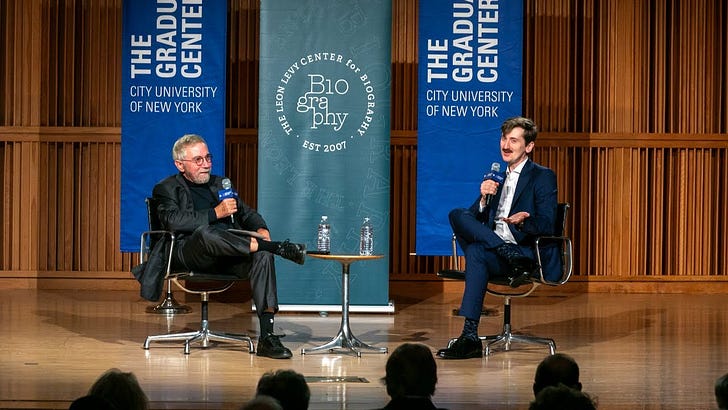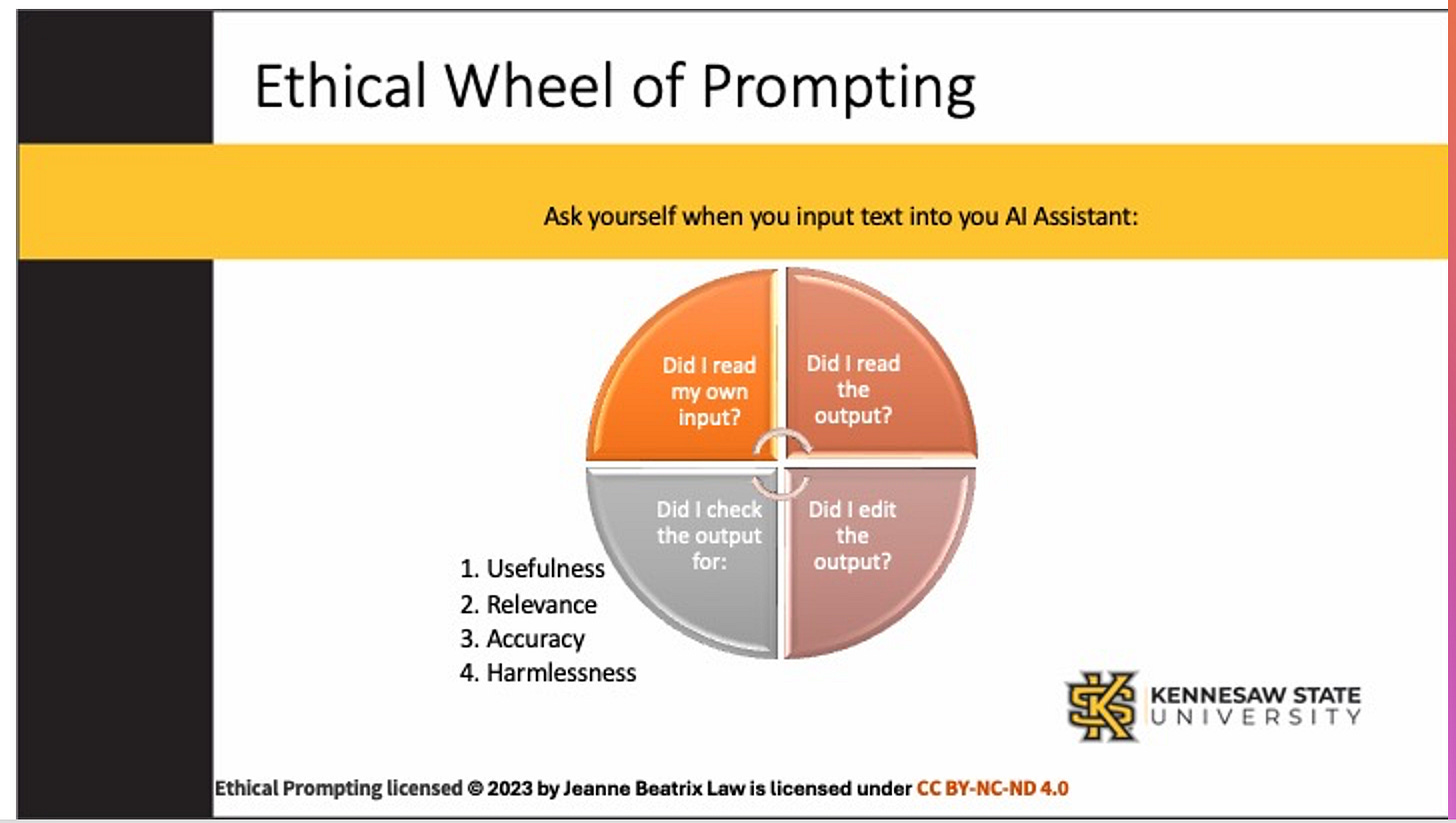
Before I sit down to write, whether it’s emails, letters, or an essay, I take a few moments to center myself. A few deep breaths in (count 5), slow exhales out (count 10). This small act of mindfulness helps me transition into the mental space needed for creative and analytical work. I’ve found that integrating mindfulness into the writing process can be transformative. I have described how I continue to practice mindfulness with human-AI collaboration in this post. I hope you find it helpful in your own writing process.
Witnessing the Writing Process
One of the greatest challenges for me in writing is moving beyond the reactive mind. When I write, especially in fast-paced environments, I often get caught up in production—generating words, meeting deadlines, responding to external pressures. Mindfulness offers a way to slow down and witness my own writing process. What I mean is that observing the moment when an idea takes shape, noticing how it expands or contracts with each sentence, and recognizing when I need to step back and reassess not only cultivates a sense of mindfulness, but it also makes me a witness to my own writing. Instead of pushing forward with momentum alone, this practice allows me to engage in the writing process with more curiosity, intention, and reflection. It enables me to see not just the words appearing on the screen, but also the thoughts, emotions, and decisions that shape them.
But what about AI and the quickness with which it can create words, texts, and meaning? Over the past year I have combined my mindful writing practice with generative AI (genAI). Collaboration. By cultivating a “witnessing” awareness, I think all writers can engage with genAI in a more intentional, creative, and reflective manner.
Yes, genAI can generate text quickly, but mindful writing requires us to step back and examine what emerges from each input, output, and iteration to get the best results. Instead of merely accepting AI output as a shortcut to completion, we can treat AI as a collaborator—an assistant that helps us refine, challenge, and expand our ideas. This shift, of course, requires metacognition: thinking about our thinking, noticing our responses, and making deliberate choices about how we shape our writing. In this post, I will explain how I complete this tech-enabled, mindful practice and why I think this practice can be made accessible to all writers through a method I have developed and tested for human-AI collaboration.
Some readers may have already read about the Rhetorical Prompting Method. This method is a valuable asset to mindful writers. It guides us through structured questions that consider audience, purpose, genre, tone, style, and context as we simultaneously engage with genAI. Rather than jumping directly into writing, this approach uses prompting as a precursor (prompt-first), allowing writers to engage critically with our own thoughts before AI-generated text even enters the process. We could also think of this as 'going meta'—a practice that fosters deeper reflection, critical thinking, and metacognition. A brief refresher on the method:
The Rhetorical Prompting Method is a structured yet flexible approach to engaging with AI assistants in writing, blending critical thinking, rhetorical awareness, and iterative refinement. Rooted in traditional rhetorical and writing processes, this method encourages writers to consider key elements—purpose, audience, tone, genre, style, context, facts, and editing —before crafting AI prompts, ensuring that generated outputs align with specific writing goals.
Unlike conventional genAI prompting, which often prioritizes speed and efficiency, the Rhetorical Prompting Method is a recursive and metacognitive process. Writers prompt first, using genAI as a collaborative tool to test ideas, refine arguments, and explore different perspectives before drafting. This approach fosters deeper engagement with both AI and the writing process, making AI-assisted writing an active and reflective practice rather than a passive shortcut. This practice also means that humans are always “at the helm” of human-AI collaboration.
The Intersection of Mindfulness and Rhetorical Prompting
The Rhetorical Prompting Method encourages writers to engage with AI critically—crafting precise and thoughtful prompts that elicit meaningful responses, iterating based on feedback, and refining our approach through revision. When paired with mindfulness, this method fosters a deeper connection with our own writing. It allows us to move beyond surface-level text generation into a space of intentional creativity.
For me, mindfulness with the Rhetorical Prompting Method has also been a powerful tool for managing attention deficit disorder. It helps me focus on the task directly before me without becoming overwhelmed by the endless possibilities AI can generate. This practice of awareness has made my interactions with genAI more purposeful and has deepened my ability to guide students in using these tools effectively. Put simply, the Rhetorical Prompting Method gives me access to the freedom of creativity and provides equity in approaching writing that I might find more difficult without.
The Ethical Wheel of Prompting: A Framework for AI Engagement
Mindful prompting is not just about generating better outputs, though; it is also about ethical and responsible AI use. The Ethical Wheel of Prompting ensures that AI-assisted writing remains intentional, responsible, and effective. The wheel consists of four guiding questions:
Did I read my own input? Is my prompt clear, purposeful, and well-structured?
Did I read the output? Does the AI response align with my intent?
Did I check for usefulness, relevance, accuracy, and harmlessness? Is the content ethical, fact-based, and appropriate for my audience?
Did I revise the output for usefulness, relevance, accuracy, and harmlessness? Have I refined the AI-generated text so it meets ethical and rhetorical standards?
By applying this wheel alongside the Rhetorical Prompting Method, we continue our trek beyond passive AI use into active, thoughtful engagement that reinforces mindful writing as a recursive, metacognitive — and ethical — process.
A Simple Mindfulness Practice for Writing with AI
Here’s a practice I use before and during engagement with AI in my writing process:
Settle in: Find a quiet space, sit comfortably, and take a few deep breaths. Close your eyes if it helps you focus.
Ground yourself: Notice how your body feels. Release any tension in your shoulders, jaw, or hands. Visualize the tension leaving these places. Take a few deep breaths in through your nose for a count of 5; breathe out through your mouth for a count of 10. Wrinkle up your face as hard as you can, then release.
Set an intention: Ask yourself, What am I hoping to explore in my writing today? Instead of rushing to generate text, frame your writing as a process of discovery.
Engage mindfully: As you begin prompting, observe your reactions to AI-generated content. Do you feel resistance? Excitement? Frustration? Maybe even amazement or even agreement? These emotions can guide you in shaping a more authentic piece of writing as you continue prompting.
Reflect before revising: Before editing AI-generated text, take a moment to pause and read the output with curiosity. What resonates? What needs to be reshaped? What sounds effective to you and what doesn’t? Approach the text as if you were a thoughtful editor rather than a passive recipient.
Finish on your own: After you are satisfied with the output you get (this usually takes two-six iterations, depending on what you are writing), ask your AI assistant to provide you with a downloadable document OR copy/paste the output into a document. At this point, you will finish up using the writing process as you revise for audience, tone, style, facts, and grammar for the specific type of writing you are producing.
Engaging the Writerly Brain Through Prompting
Being a mindful writer using the Rhetorical Prompting Method is not a special power reserved for a select few. We all have the ability to engage our writerly brains through prompting and collaboration with AI assistants. The key is recognizing that prompting is not just a mechanical input-output process—it is an invitation to think, reflect, and grow as a writer.
When we prompt first—rather than jumping straight into drafting—we engage in a cognitive dialogue with genAI that mirrors the internal conversations we have when writing. This process allows us to explore ideas from different angles, refine our arguments, and develop a richer understanding of our own voices. AI does not replace our creativity; rather, it amplifies it by giving us an external sounding board to push our thinking further and deeper.
By “going meta” in our prompting, we become more aware of how we shape language, how our ideas evolve, and how we can harness generative AI as a tool for intellectual and creative expansion. Prompting becomes an active engagement with our writing rather than a passive shortcut. In this way, AI-assisted writing becomes a practice of both discovery and refinement, leading us to deeper insights and more thoughtful communication.
By combining together our individual mindfulness, the Rhetorical Prompting Method, and the Ethical Wheel of Prompting, we transform AI-assisted writing into a powerful tool for metacognition and critical thinking.
Prompting becomes more than a means to an end—it becomes a reflective practice that enhances our writing, our awareness, and our ethical engagement with technology.
No matter your academic level or life experience, you have the ability to engage in this mindful, prompt-first approach. Writing is a skill that grows with attention and practice, and generative AI can be an ally in this journey. Whether you’re a student exploring your voice, a professional refining your messaging, or a lifelong learner experimenting with new ideas, rhetorical prompting can serve as a tool for deeper thinking and clearer, purposeful communication.
I invite you to take this approach into your own writing practice. Experiment with mindful prompting, reflect on your process, and engage with AI as a partner in your creative and intellectual growth. I also invite you to remember that writing is not just about producing words—it’s about discovery, awareness, and intentional engagement. I hope this process and practice help you embrace generative AI as a mindful collaborator, helping you shape your words and thoughts with clarity and purpose. And always remember that you are the human at the helm. Try this out; see if it works for you. Then, connect with me and other colleagues in the chat. Thank you for making the time to read this post; I look forward to connecting. — Jeanne









































